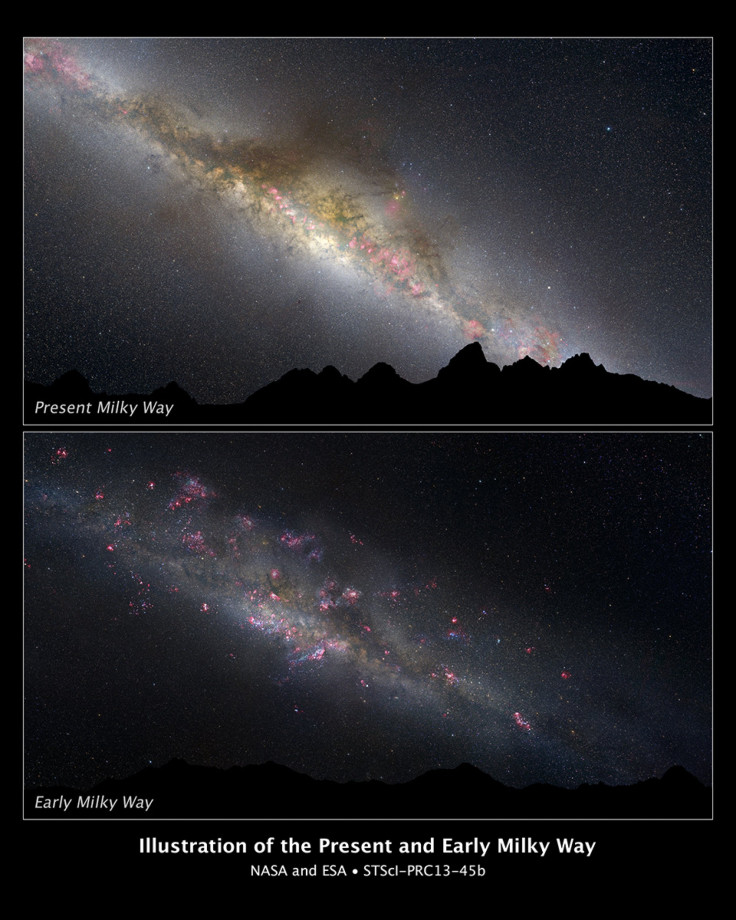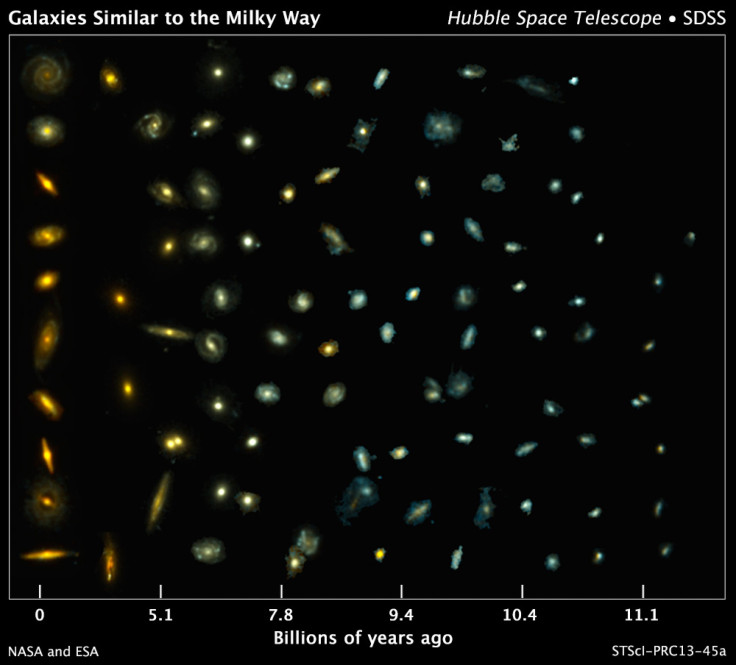Milky Way In Its Early Years? Hubble Images Reveals What Galaxy Looked Like When It Was ‘First Formed’ [PHOTOS]

The Milky Way had a colorful past.
According to new visual evidence obtained by astronomers, NASA’s Hubble Space Telescope has offered clues on what the galaxy looked like when it was first formed. The findings were recently published in The Astrophysical Journal.
"For the first time, we have direct images of what the Milky Way looked like in the past," study co-leader Pieter G. van Dokkum of Yale University said in a statement. "Of course, we can't see the Milky Way itself in the past. We selected galaxies billions of light-years away that will evolve into galaxies like the Milky Way.”
Astronomers studied the evolution of 400 galaxies that resembled the Milky Way over 11 billion years. Using those images, they determined the galazy started as a faint, blue low-mass object with a lot of gas.
“By tracing the Milky Way's siblings, we find that our galaxy built up 90 percent of its stars between 11 billion and 7 billion years ago, which is something that has not been measured directly before," van Dokkum added.
The Milky Way most likely resembled a flat disk with a bulge in the middle, both of which eventually grew into the spiral it is today. "You can see that these galaxies are fluffy and spread out," study co-leader Shannon Patel of Leiden University in the Netherlands said. "There is no evidence of a bulge without a disk, around which the disk formed later."
Around 4 billion years ago, when the galaxy was at the peak of star birth, it was producing about 15 stars a year – a drastic difference from today, where it pumps out just one a year.

The team used three of the Hubble’s programs to identify galaxies in deep space that resemble the Milky Way. Using a catalog of over 100,000 galaxies that varied in different distances and sizes, the team found that spiral galaxies with bulges were largely built at the same time as disks.
"These deep surveys allow us to see the smaller galaxies. In previous observations we could only see the most luminous galaxies in the distant past, and now we can look at more normal galaxies,” team member Joel Leja of Yale University said. “Hubble gives us the shapes and colors of these spirals as well as their distances from Earth. We also can measure the rates at which each part of the galaxies grew. All of this is difficult to do from the ground."
Astronomers used computer models to confirm their findings. They reinforced the idea that spiral galaxies don’t need to merge with others in order to grow. Rather, star production made the spirals grow.
"These observations show that there are at least two galaxy-formation tracks," van Dokkum said. “But from our survey we find that galaxies like our Milky Way show a different, more uniform path of growing into the majestic spirals we see today."
© Copyright IBTimes 2024. All rights reserved.












